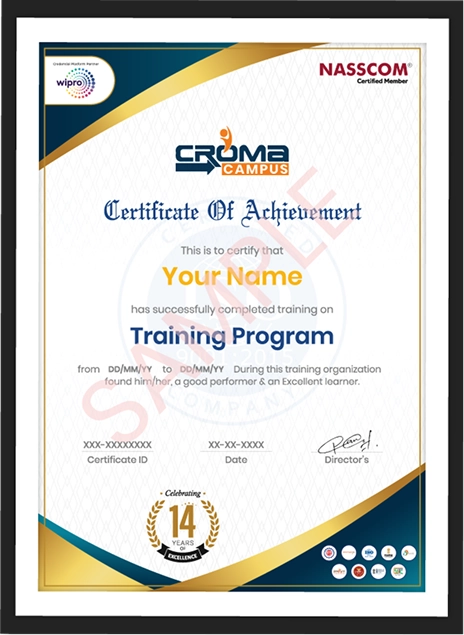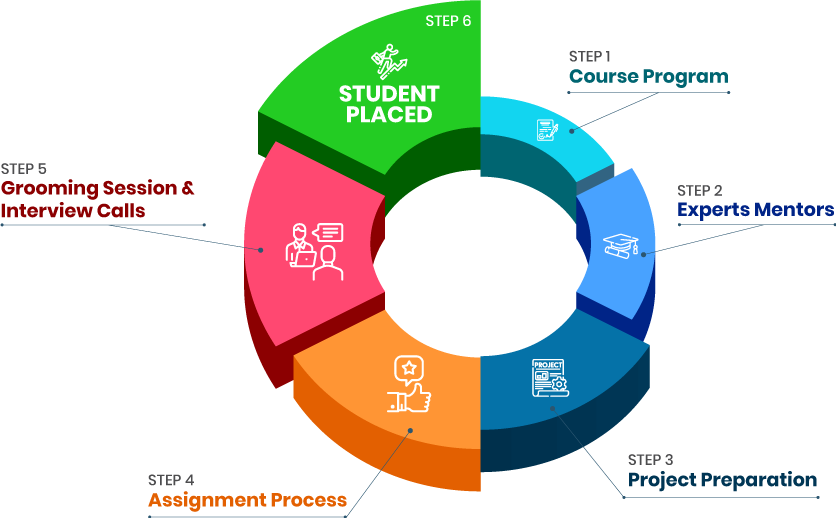Course Design By
Nasscom & Wipro
Getting knowledge of making out the bug-free application.
Providing out the required necessary specification to the software.
Learning out the operating procedure of software manually.
Making out the software best for the end-user experience.
Testers observe all the documents which are related to the software for testing out the site of the bug.
Analyzing the documents for covering all the requirements of customers and giving them the best end-product.
Development of test cases takes place which is based on the needs & requirements of the software.
Many of the test cases are executed manually with the help of Black box testing & Grey box testing respectively.
If there are bugs in the software then the team of testers requires to inform the development team for giving the best end-user product.
The development team solves the issue and makes out the software bug & defect-free.
In case the automated testing has no bugs, manual quality assurance helps out in checking the design bugs & usability defects. It helps out in finding out illogical navigation coming out to the customer paths.
The techniques of manual testing require the physical involvement of human beings. It is the last line in QA as human intervention becomes necessary for finding out the loopholes in the software.
If we talk about the success of manual testing then it depends on the thoroughness of human intervention needed to complete the project. It emphasizes the non-thinking part of automated testing.
Manual testing works better in the areas in which automated testing is unable to replicate out intuitiveness, overall comprehension as well as iterative easements.
Multiple forms of testing can only happen manually and automation, as well as analysis, needs human intervention for finding results.
Manual testers design the test cases with 100 % of test coverage & executing in a variety of results. They are required to ensure that issues get passed to the development team for further fixations.
An accurate understanding of testing methodologies.
Well-experienced in the procedures of manual testing.
Familiarity with testing procedures as well as planning out the documents.
Identifying & analyzing the software defects.
Responsible for the overall adherence to multiple QA test protocols & processes.
Understanding as well as analyzing the business, functional, testing & UI (User Interface) requirements.
Ensuring compliance with the organizations financial procedures.
Investing out the production issues by recreating the test environments and working with the development team to a resolution out the issues.
we train you to get hired.

By registering here, I agree to Croma Campus Terms & Conditions and Privacy Policy
+ More Lessons
Course Design By

Nasscom & Wipro
Course Offered By

Croma Campus

Stories
success
inspiration


career upgrad


career upgrad


career upgrad


career upgrad
05-Jul-2025*
07-Jul-2025*
09-Jul-2025*
05-Jul-2025*
07-Jul-2025*
09-Jul-2025*

You will get certificate after
completion of program

You will get certificate after
completion of program

You will get certificate after
completion of program
in Collaboration with






Empowering Learning Through Real Experiences and Innovation

we train you to get hired.

Phone (For Voice Call):
+91-971 152 6942WhatsApp (For Call & Chat):
+91-971 152 6942Get a peek through the entire curriculum designed that ensures Placement Guidance
Course Design By


Course Offered By

Ready to streamline Your Process? Submit Your batch request today!
Manual testing is not an easy task as it requires the proper focus on finding out the loopholes of the product.
No, there are no coding requirements for manual testing.
It is not preferred as there are chances of eros in human intervention.
Yes, SQL is needed for manual testing.

FOR QUERIES, FEEDBACK OR ASSISTANCE
Best of support with us
For Voice Call
+91-971 152 6942For Whatsapp Call & Chat
+91-9711526942